The modular setup of the Nanomatch software allows researchers to address a variety of scientific questions regarding OE devices, ranging from geometrical aspects in molecular layers via eletrical properties of single molecules in the bulk and charge carrier mobilities in pristine layers to the computation effects in multi-layer stacks. To get an idea on how the software stack can be used to understand processes and effects in OLEDs or OPV devices or improve materials and devices, check out the use cases below.
We are constantly working to include new examples that target the needs of our partners. If you are interested in a specific case that is not addressed below, please write us at info@nanomatch.com.
Ab-initio simulations of OLEDs
| Performance and stability of OLEDs is the direct consequence of a multitude of a complex interplay of microscopic processes such as charge transport, exciton formation, separation or quenching. These processes are triggered and balanced by molecular properties of all materials involved in a tightly entangled fashion. To aid the optimization of efficiency and lifetime of increasingly complex multi-layer devices, our simulation approach can serve as a virtual microscope to understand what is going on on a microscopic level. In this use case, we investigate a recently reported blue OLED with exceptional stability and apply our methods to systematically identify and eliminate performance bottlenecks on a microscopic level. Read the full use case |
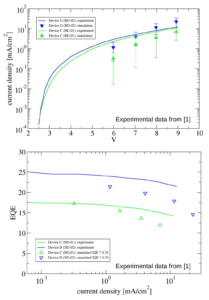 |
Dexter suppression in co-emission systems
| In co-emission systems, singlet-triplet conversion on fluorescent emitters can be facilitated by parastitic Dexter-transfer related processes. To suppress this process and maxmize efficiency in these systems, fluorescent emitters are dressed with side groups which have non-hybridizing states outside the homo-lumo gap, resulting in yet another dimension in the design of OLEDs and OLED materials. In this use-case we use our multiscale approach to compute Dexter escape rates from fluorescent emitters to assess the shielding efficacy of dressing configurations of fluorescent emitters for a certain material combination. Read the full use case |
 |
Computing quenching crosssections
| Long range exciton quenching processes through energy transfer from an excited molecule onto another charged or excited molecule limit device efficiency and lifetime of OLEDs. To support R&D efforts towards well balanced material combinations we developed a simulation approach to assess the affinity of OLED materials to act as acceptor material for exciton-polaron-quenching or exciton-triplet-annihilation in a given setup. This approach, here demonstrated for two TADF emitters PXZ-TRZ and Spiro-CN, can find donor excitation energy ranges where the acceptor is insensitive to exciton quenching, and therefore help identifying suitable partners for mixed films e.g. in co-emission systems. Read the full use case |
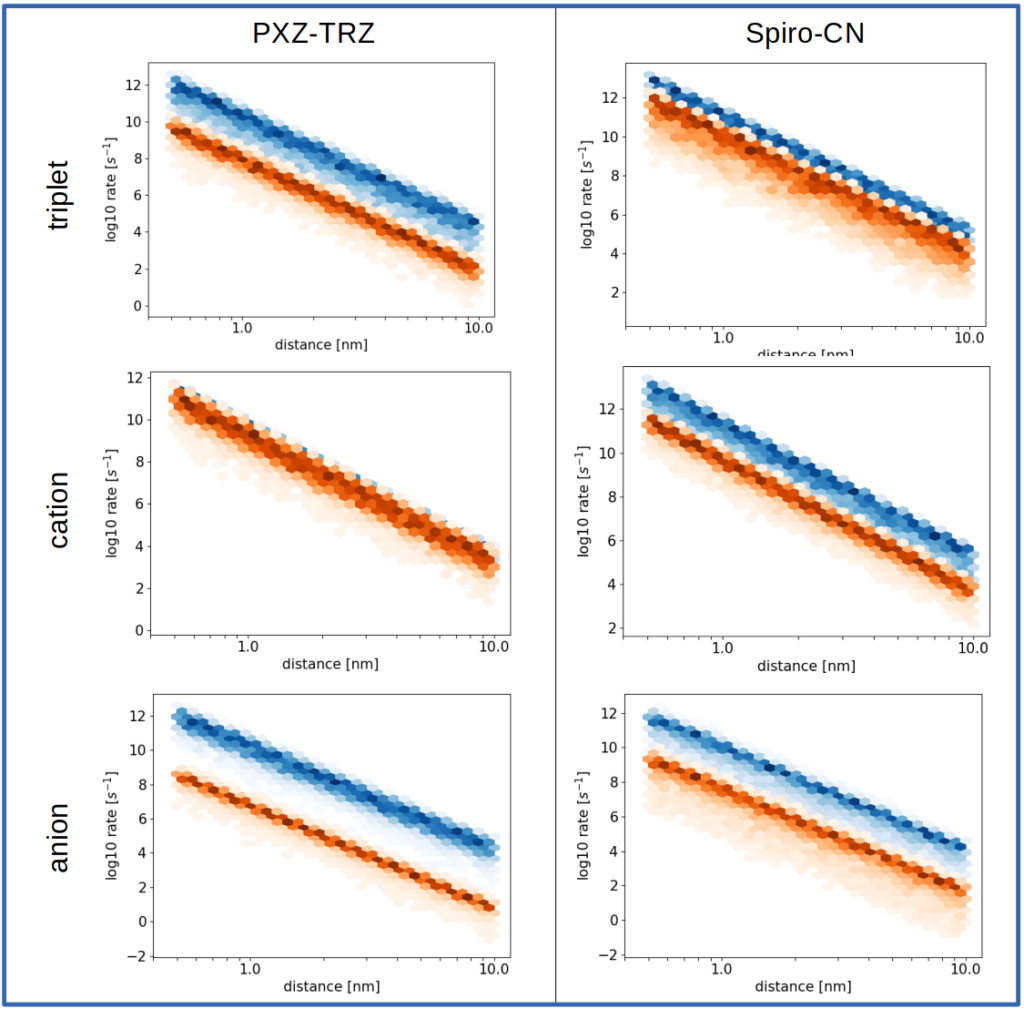 |
Optimizing doped injection layers
| Optimal performance of DILs depends strongly on activation and charge separation processes as well as injection into adjacent layers. Design of DIL materials therefore requires careful alignment of of host and dopant materials in the DIL, as well as materials in adjacent transport layers. To enable the efficient exploration of the chemical space of host-dopant combinations we developed a simulation approach that models doping processes on a microscopic level, to predict DIL performance in specific setups. Read the full use case |
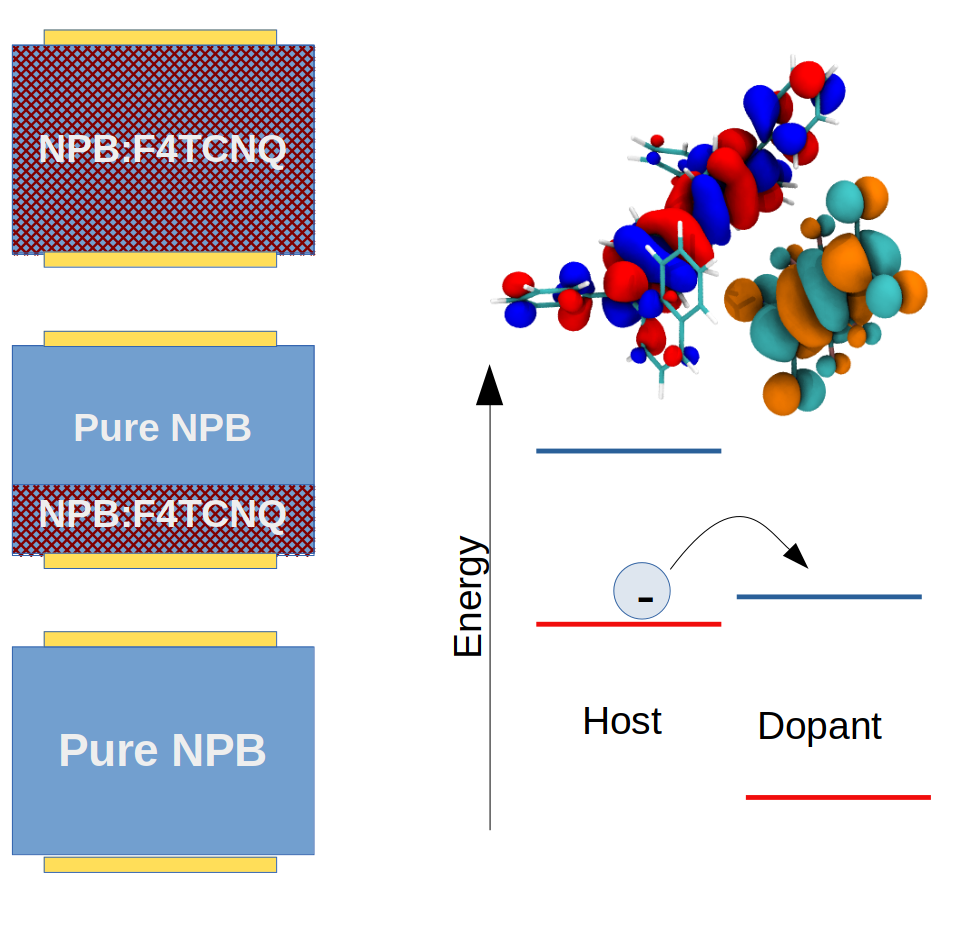 |
OLED device optimization – minimal working example
| In this use case we demonstrate how the full Nanomatch software stack is applied to compute essential properties of an OLED stack: J-V characteristics, charge distribution along the device and quantum efficiency. In order to highlight the methodology, we restricted ourselves to the simplest model: a bilayer OLED. While this setup is a rather “bad” OLED in terms of quantum efficiency, it illustrates the application of all modules in the OLED workflow and how insight gained by the simulation can lead to targeted improvement of devices. Extension to arbitrarily complex multilayer stacks is straight forward. Read the full use case |
 |
Full in-silico improvement of ETL materials by three orders of magnitude
| This use case substantiates the opportunities that are generated by including simulation into industrial R&D approaches: Using the Nanomatch software stack, a novel compound was developed fully in the computer, with the electron mobility improved by three orders of magnitude. This exemplifies how the incorporation of predicitive simulation into the design process can minimize experimental trial and error, thereby boosting innovation in materials design. Read the full use case. |
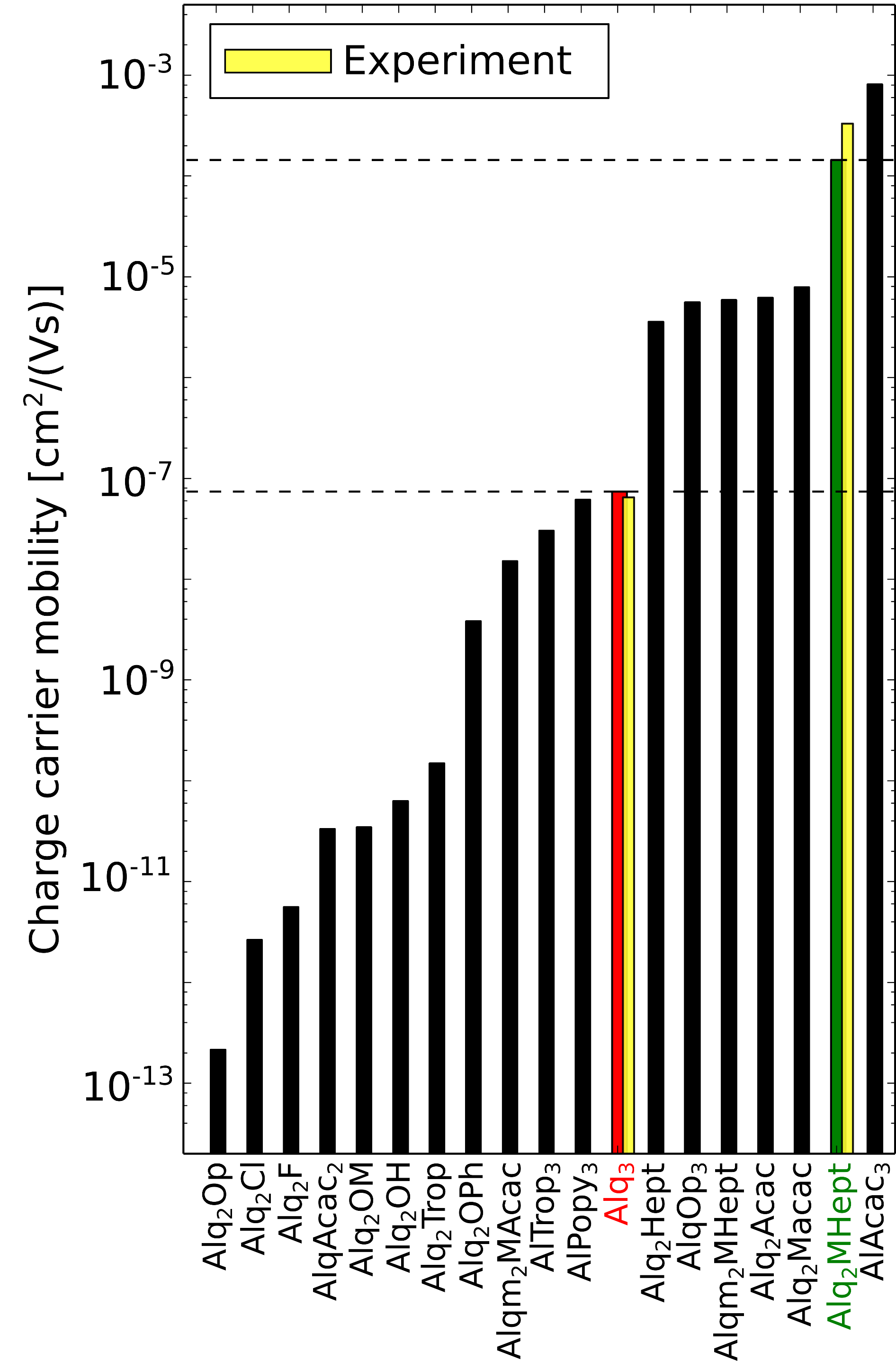 |
Bulk mobility in pristine molecular layers
| This use case demonstrates a very basic, but important application of the Nanomatch Software Stack: the calculation of charge carrier mobilities in pure α-NPD and ALQ3 layers using Parametrizer, Deposit, QuantumPatch and the AnaMobi mobility solver. Read the full use case. |
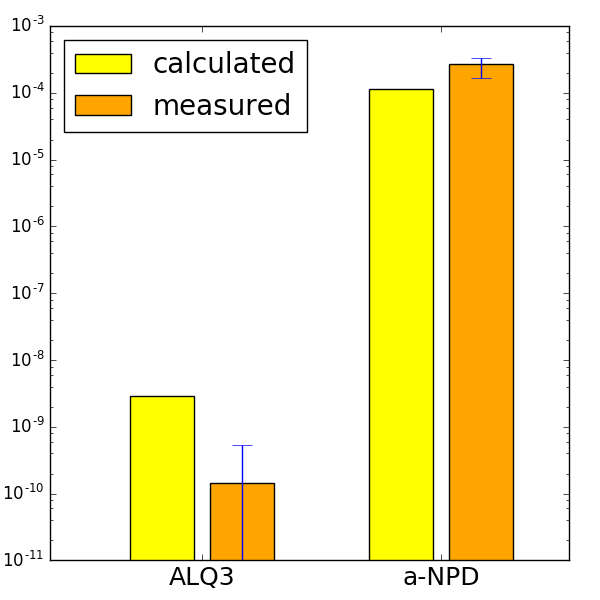 |
Influence of environmental effects on excitation spectra of host materials
| This use case demonstrates how QuantumPatch is applied to the calculation of excitation spectra of three host materials. Environmental effects are taken into account on full quantum mechanical level, resulting in shifts in the excitation spectra induced by the unique elctrostatic environment of each molecule. Read the full use case. |
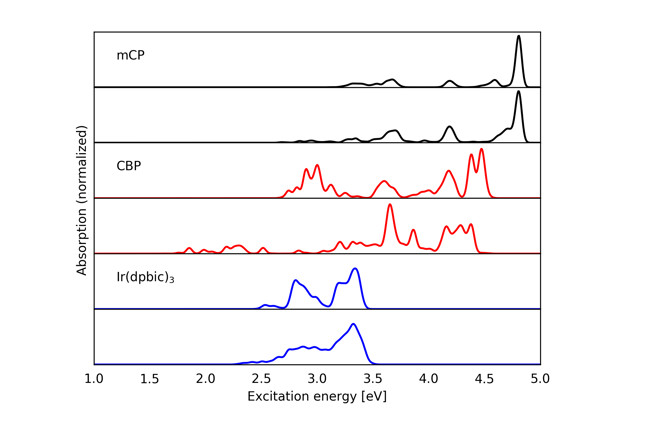 |
Computation of the electric field and temperature dependence of charge carrier mobilities in organic electronic layers
| In this use case we present an extensive study of macroscopic properties of organic electronic layers. Based on the parameter-free multiscale approach, charge carrier simulations are performed with LightForge, and the dependence of the hole mobility on temperature and electric field is extracted. This approach can easily be extended to analyze doped systems or effects at interfaces. Read the full use case. |
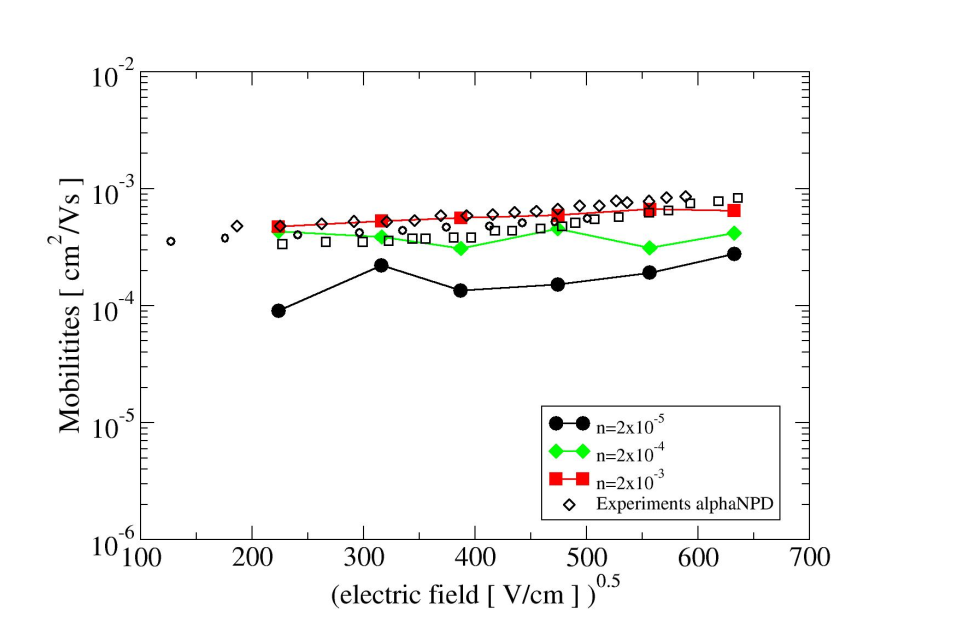 |